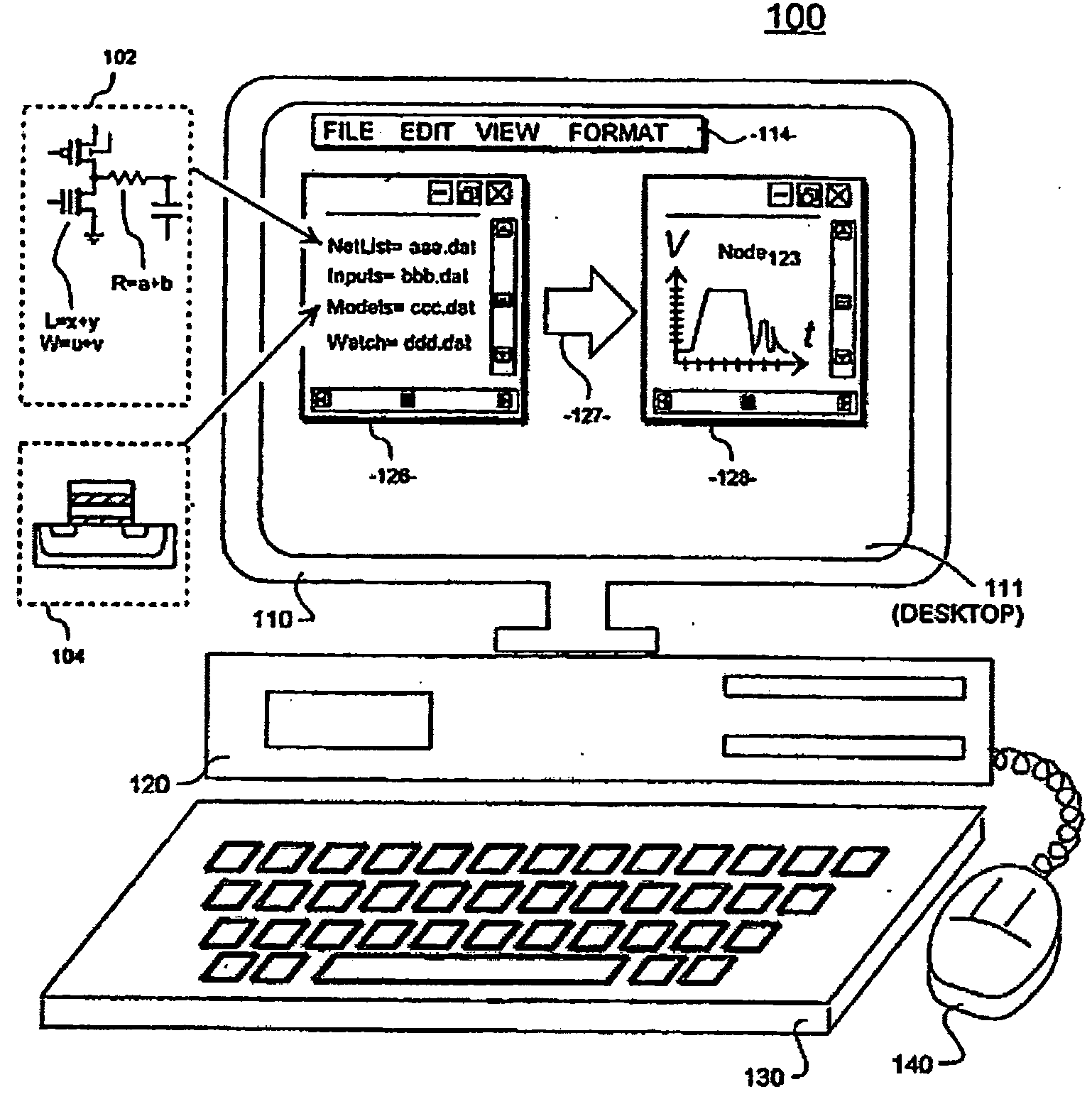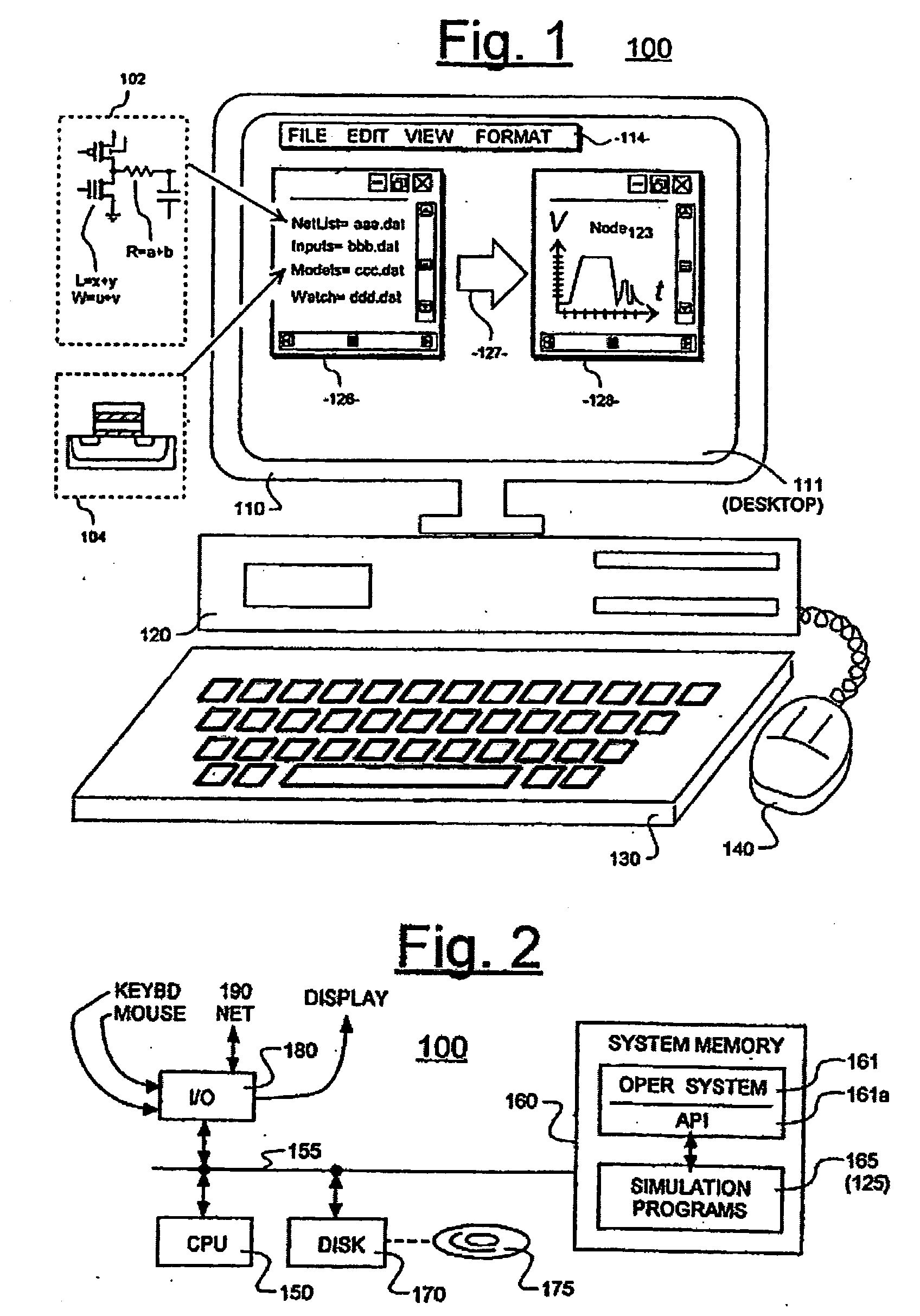Systems and methods for efficiently simulating analog behavior of designs having hierarchical structure
a hierarchical structure and analog behavior technology, applied in the field of machine-implemented simulation of electrical circuits, can solve the problems of difficult and difficult spice-like simulation of whole systems, and is not as easily done, so as to efficiently simulate analog behavior, efficiently identify redundant subcomponents, and efficiently take advantage of redundant behaviors
- Summary
- Abstract
- Description
- Claims
- Application Information
AI Technical Summary
Benefits of technology
Problems solved by technology
Method used
Image
Examples
Embodiment Construction
[0055]FIG. 1 illustrates a perspective view of an overall computer system 100 that may be programmably configured to operate in accordance with the disclosure. This view will be used to introduce basic aspects of accurately-simulating the analog behaviors of interconnected physical devices and it will be further used to explain the dilemmas that simulator designers face as the component density of simulated systems increase.
[0056] The illustrated computer system 100 includes a display monitor 110, a computer housing 120, a keyboard 130 and a mouse 140. User input and output devices 110, 130 and 140 are merely examples. Other to-user output devices, and from-user input devices may, of course, be used in addition to or in place of the illustrated peripherals.
[0057] Display monitor 110 includes a display screen 111 that can display a number of graphical items including a desktop layer and overlying windows generated by an opened application window 114. (Reference numbers that are bra...
PUM
 Login to View More
Login to View More Abstract
Description
Claims
Application Information
 Login to View More
Login to View More - R&D
- Intellectual Property
- Life Sciences
- Materials
- Tech Scout
- Unparalleled Data Quality
- Higher Quality Content
- 60% Fewer Hallucinations
Browse by: Latest US Patents, China's latest patents, Technical Efficacy Thesaurus, Application Domain, Technology Topic, Popular Technical Reports.
© 2025 PatSnap. All rights reserved.Legal|Privacy policy|Modern Slavery Act Transparency Statement|Sitemap|About US| Contact US: help@patsnap.com



